The workers at the shipyard in Karlskrona were naturally very important for the city and its development and thus they had not only the tower that should tell them the time (I actually don’t know why it is emphasised that the Admiralstorn Tower used to serve to tell the shipyard workers the right time; does this mean that all the others had the clocks/watches of their own or they did not care about the right time?), but they also their “own” part of the city in which they used to live. That part is called Björkholmen and after seeing the Admiralstorn Tower I headed in this direction.
By the way, although in connection with Karlskrona it is often mentioned that according to its urban plan most of the streets in the city are laid down at right angles, with only few of them diagonal, this is not absolutely so, but it also does not matter much. This is only my side comment, since the regularity of the urban plan is frequently mentioned and stressed.
So, as I was walking around the city, I chose to follow a street that leads beside a high wall that surrounds a part of the shipyard. Through a gate I could see there an old masting crane, as well as a new, metal one, but I just gave this a fleeting glance and moved on.
During my visit to Karlskrona, perhaps I might have skipped the part of the city called Björkholmen, had I not gone for the tourist train ride. Namely, my guidebooks did not emphasize this quarter, but during that sightseeing tour, I could see that this area seemed fairy-tale-like. At least it seemed like this to me. Admittedly, I don’t know what it looks like to the Swedes used to this type of architecture, but to me as a foreigner everything looked extremely pretty or at least picturesque.
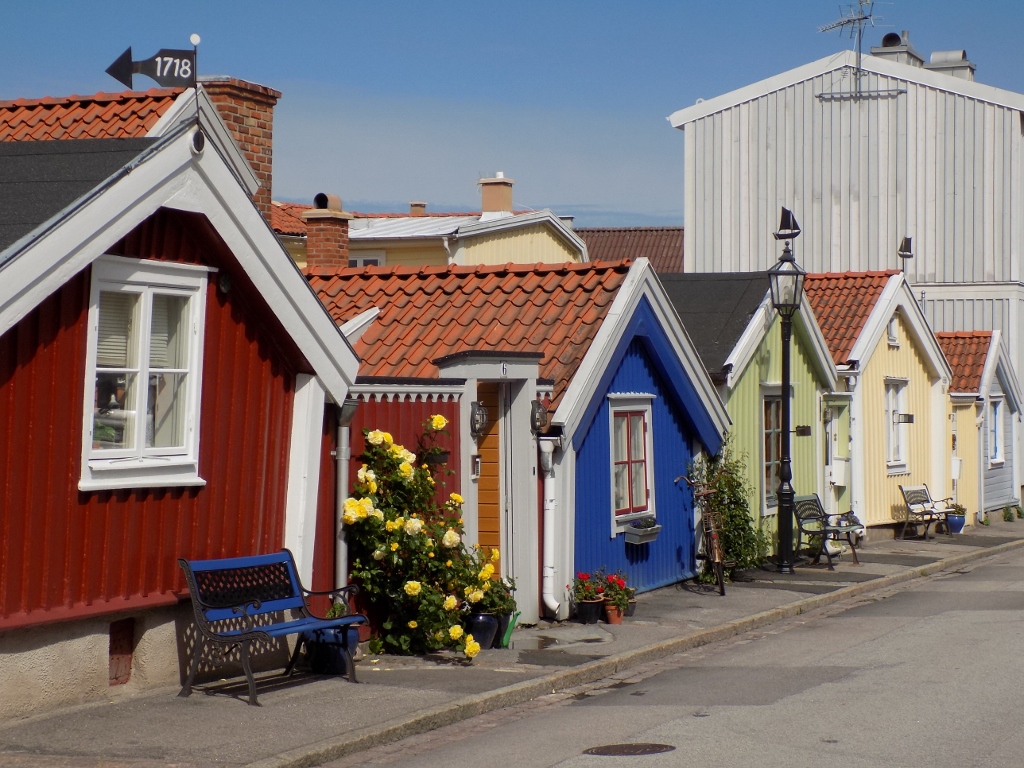 A detail from Björkholmen
A detail from Björkholmen
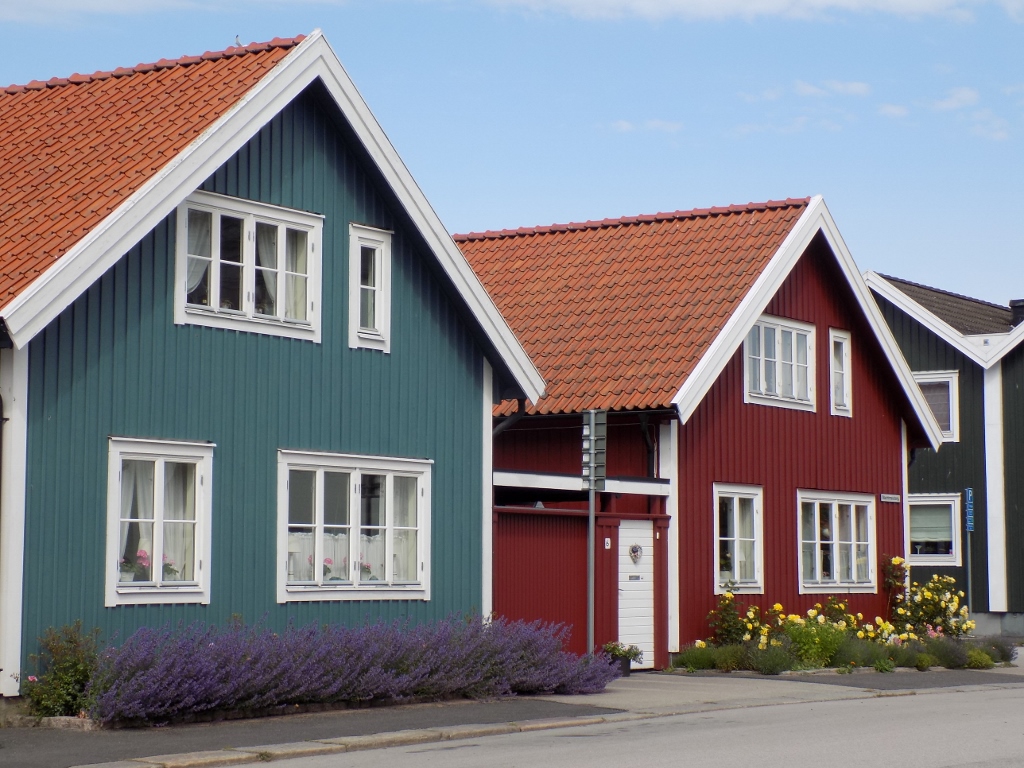 A detail from Björkholmen
A detail from Björkholmen
In the past, Björkholmen was inhabited by workers from the shipyard. In other words, I presume this used to be a poor part of the city. I don’t know who lives there now, but somehow I doubt that most of the residents of our planet could afford a house in this neighbourhood, especially common shipyard workers. However, this did not impact in any way my enjoying in the stroll between these picture-perfect homes. Some of the houses are completely small, with miniature gardens, but I got an impression that everything was perfectly harmonised. When I passed by one of the houses, I peeked inside the yard (the gate was partially open) and I was impressed with the “wild garden” that seemed to flourish inside. All the residents of this area care very much about the aesthetics and it is clear that the emphasis is on the beauty and not the size of the space.
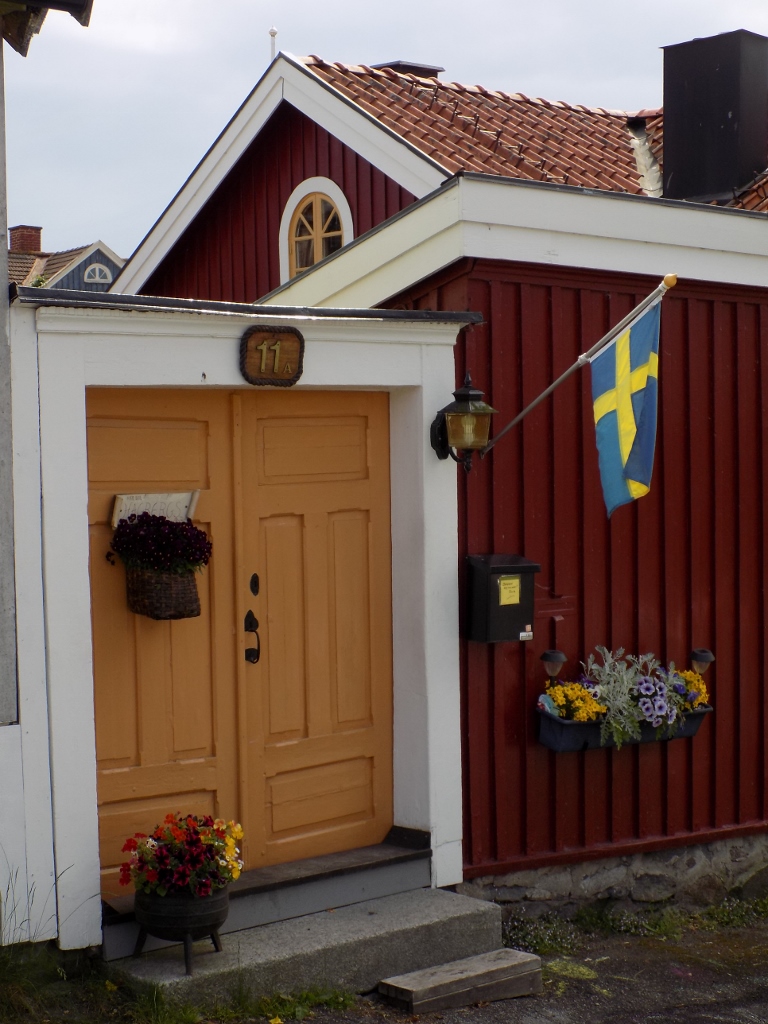 A detail from Björkholmen
A detail from Björkholmen
Björkholmen is situated on a small elevation and when I got to one of its ends I saw a part of the neighbouring island of Saltö, as well as a cute local parking lot with a nice view.
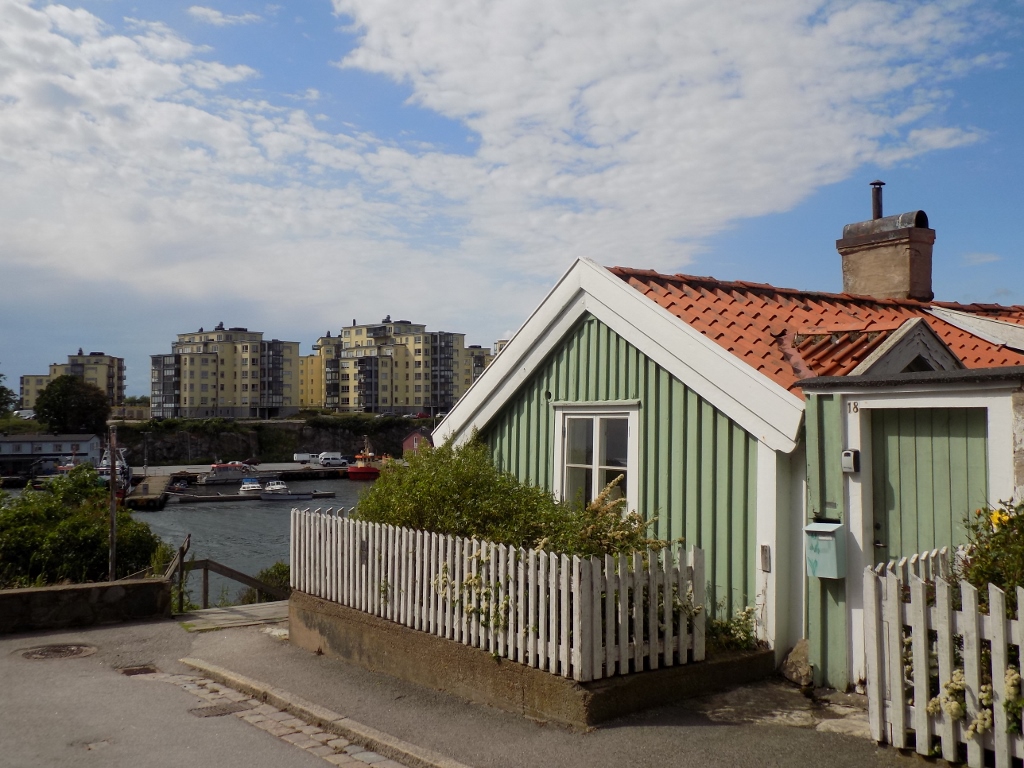 Björkholmen and a part of the neighbouring island of Saltö
Björkholmen and a part of the neighbouring island of Saltö
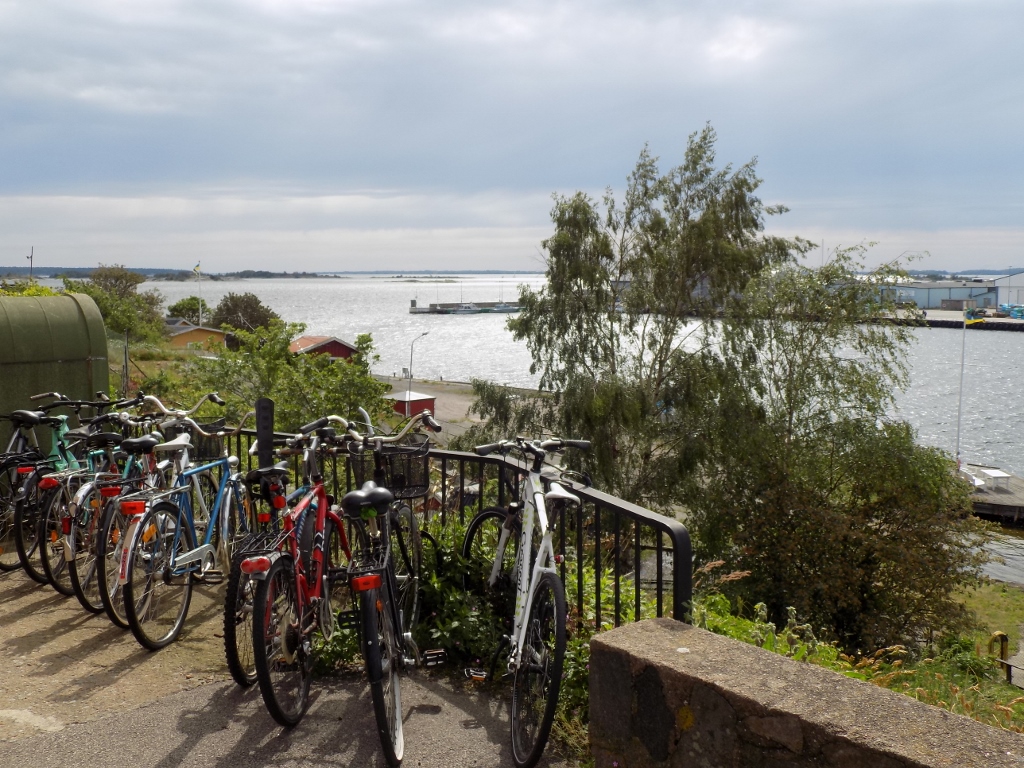 Local “parking lot” in Björkholmen
Local “parking lot” in Björkholmen
Then I went down to the shore and continued along it in the direction of the city centre, but beforehand I looked more closely at the island of Saltö. In the part of the island that faces the central city island of Trossö there is a fishing port where fishermen bring their catch every day and I could see that there was a restaurant there which prepares that fresh fish, but I happened to be in this spot rather late and the place had already closed. Still, it was interesting to see the new buildings that are comparatively tall for this city, so the locals jokingly call this part “the Manhattan.”
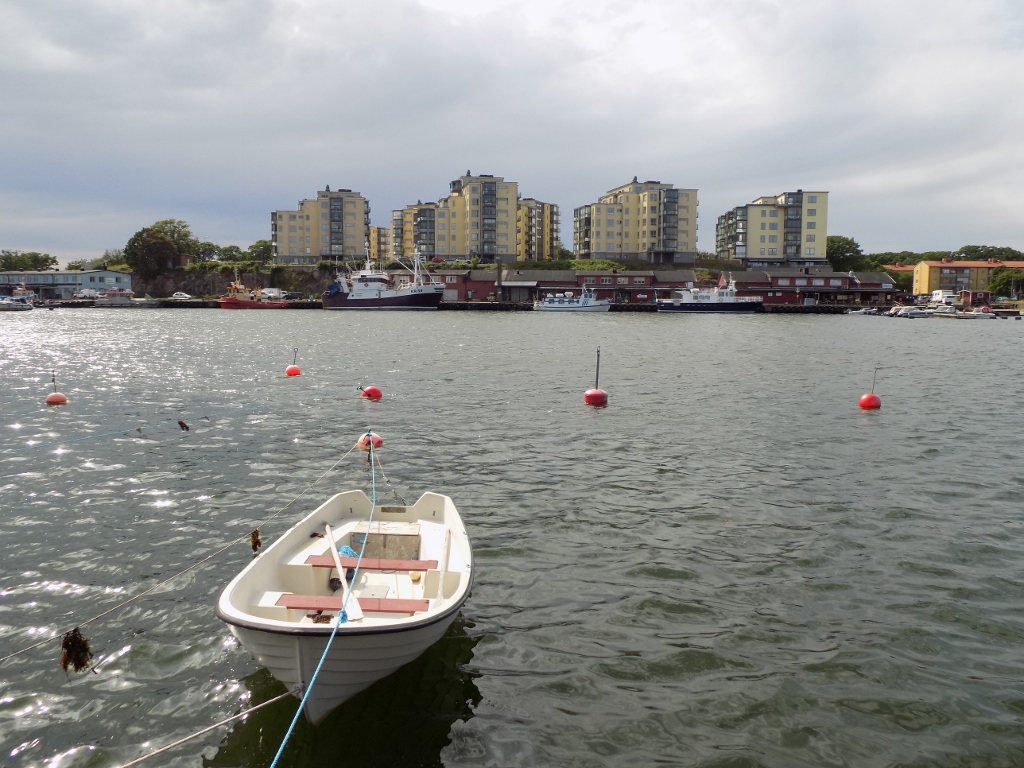 “The Manhattan” of Karlskrona
“The Manhattan” of Karlskrona
Following the shore of the island of Trossö I also came to an islet that looked more like a top of a large rock protruding from the water surrounded by the reed and that was linked to the main island by a wooden pedestrian bridge. This is the islet of Stakholmen. There are remains of some military structures made of stone on it which no longer have any function and now apart from the rock, grass, several benches, those remains and the bridge there was nothing else there. Or perhaps the first glance was wrong? Namely, I came across some very serious local residents there – a couple of families with their offspring – the great crested grebe (Podiceps cristatus) and the Eurasian coot (Fulica atra).
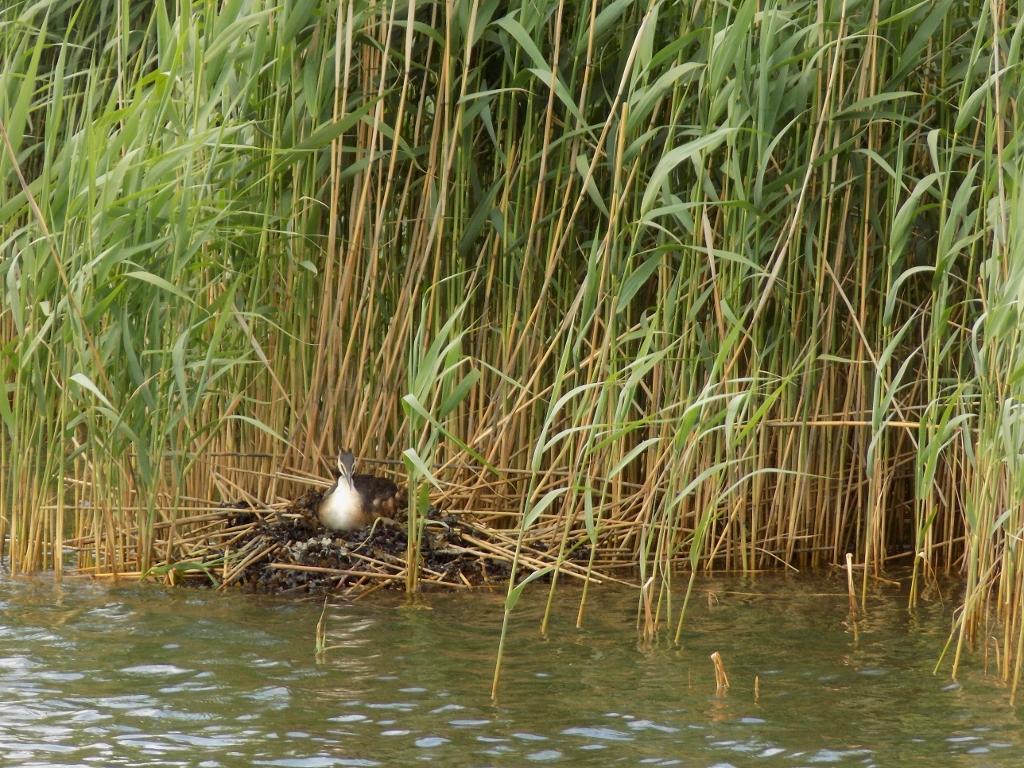 Great crested grebe lying on the nest
Great crested grebe lying on the nest
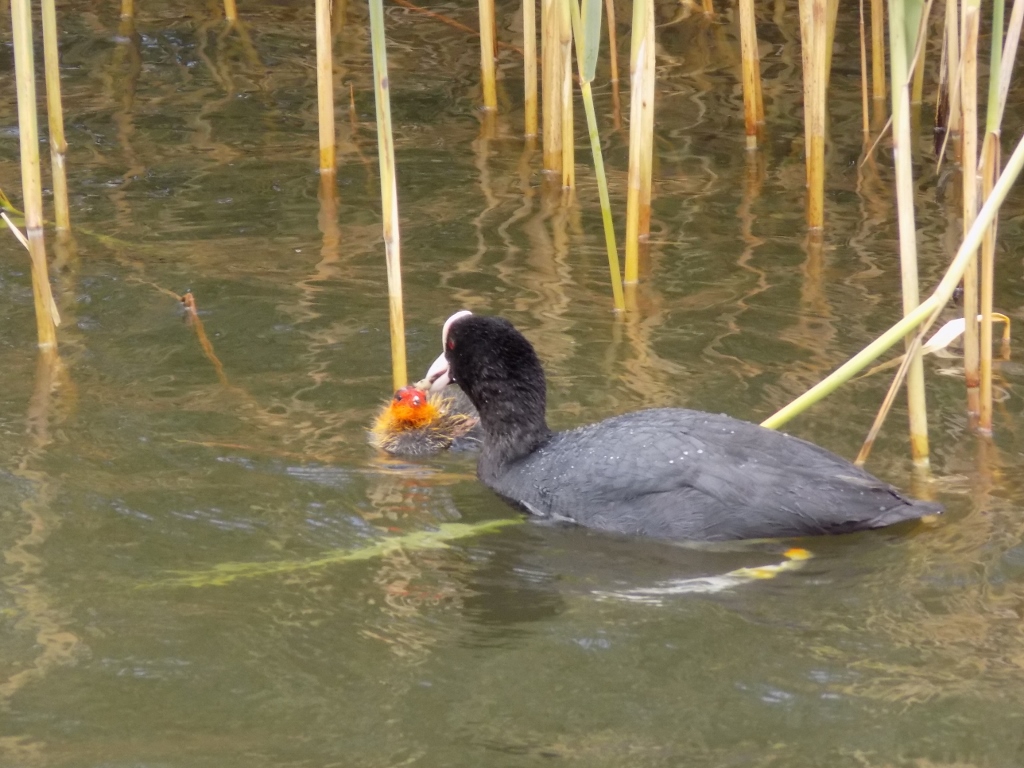 Eurasian coot (Fulica atra) with a small baby
Eurasian coot (Fulica atra) with a small baby
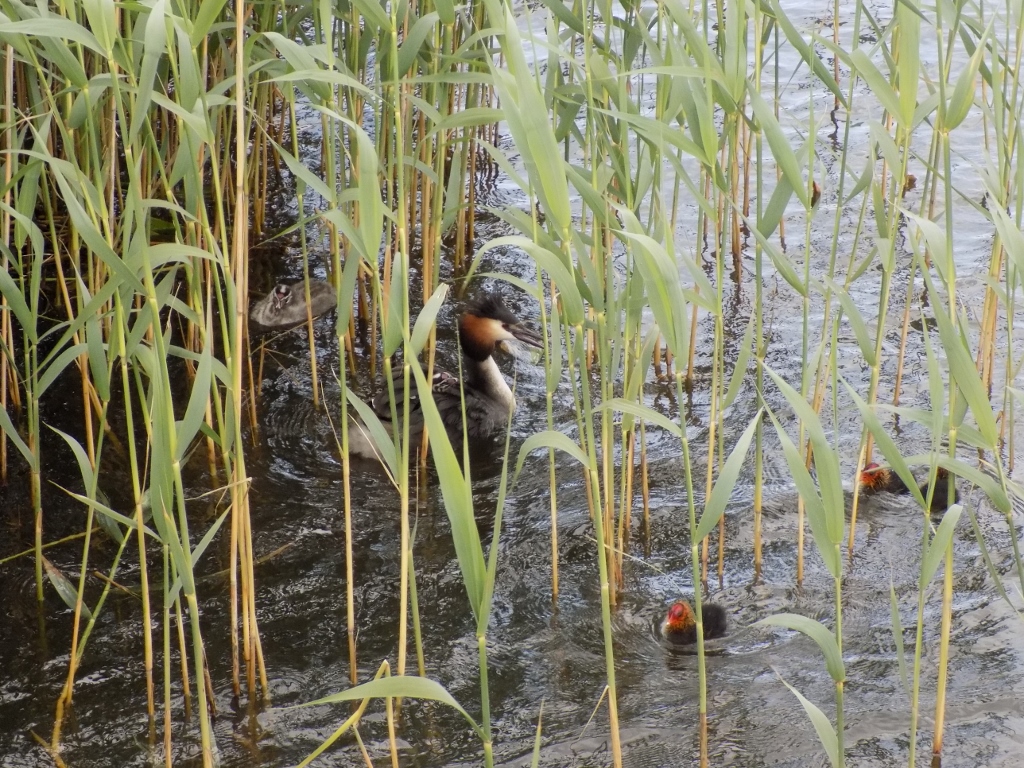 And here they are all hanging together
And here they are all hanging together
Still, not only did I stay for a while watching the birds and taking photos of them, I also climbed the top of the islet and sat there on a bench a little watching the centre of Karlskrona.
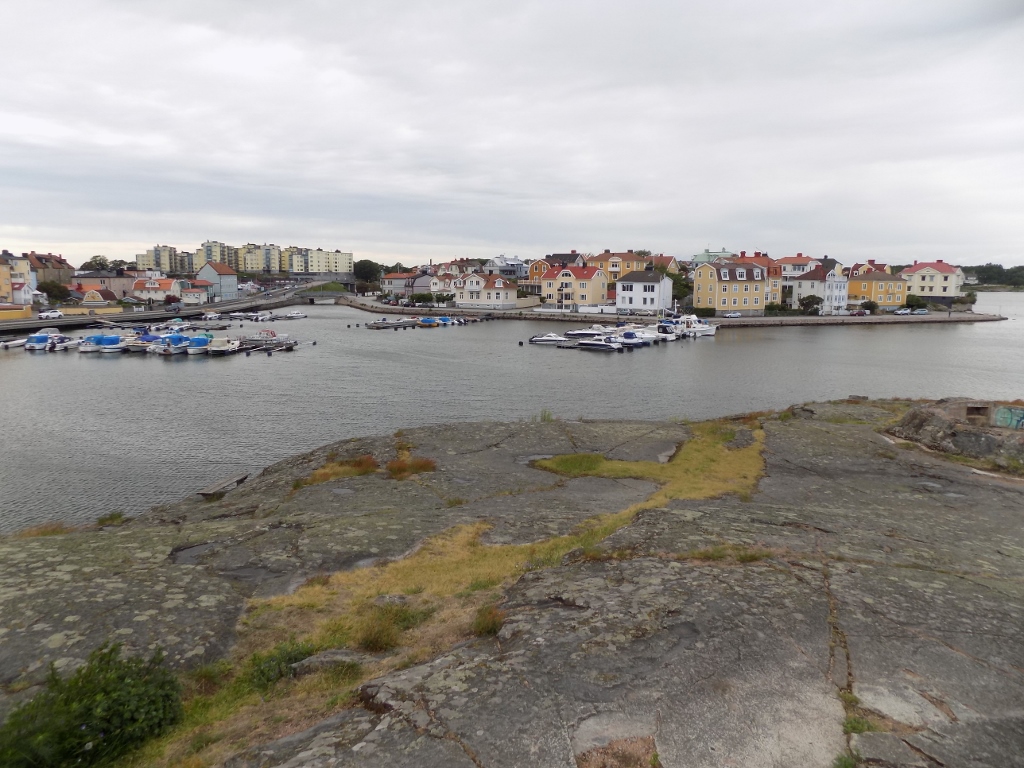 View at the centre of the city from the island of Stakholmen
View at the centre of the city from the island of Stakholmen
Following this break, I headed for the completely opposite side of the island since there was a fish restaurant there recommended to me by the young man from the tourist information office, since I wanted to give myself a treat. As it turned out, however, that young man gave me wrong information. Although I specifically asked whether the restaurant was opened all the time or it worked only at meal times, he told me the restaurant worked until late in the evening, but that was not entirely true since it was closed when I finally reached it. Since I did not have the time to search for some place that I would find attractive, eventually I stopped at some local version of fast food and although the meal was not particularly big and I tried to chew it slowly, it still took over two hours to get digested. On the other hand, I did not feel hunger, so it was not too bad after all.
As opposed to the gloomy morning when occasionally one could not see anything outside on account of the heavy rain, on my return journey the situation was completely different and I could enjoy the beauties of the Swedish landscape.
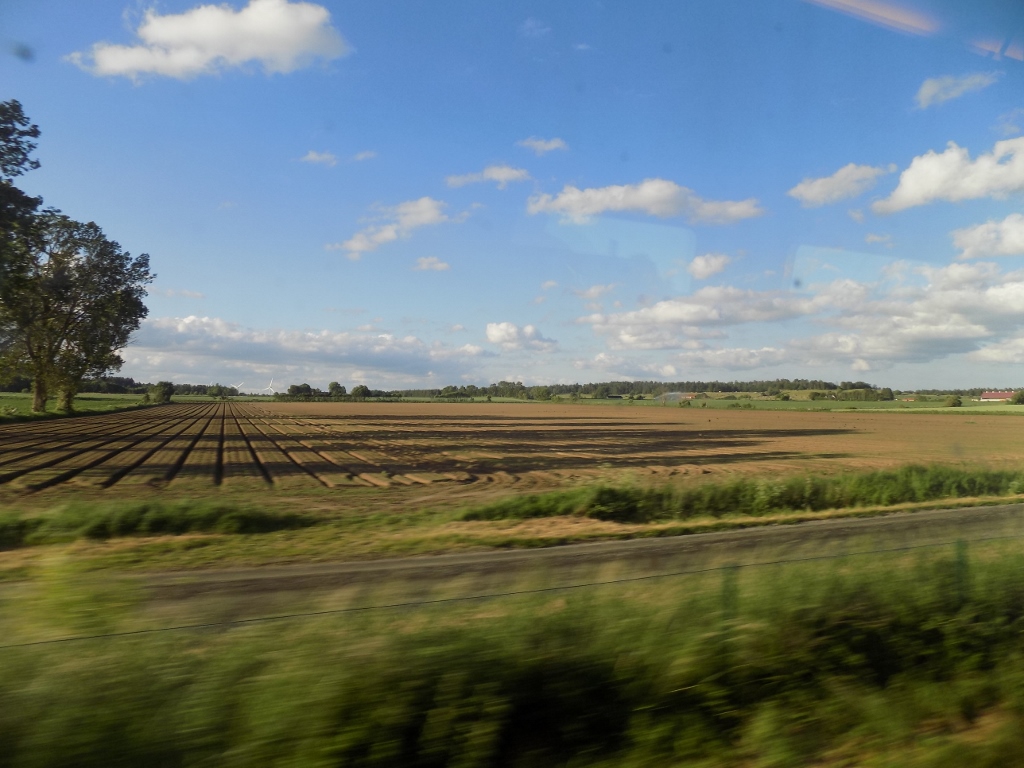 Landscapes of south Sweden
Landscapes of south Sweden
Although the whole day and my visit to Karlskrona were very positive, there was one detail filled with a lot of sadness. Namely, for over 30 years I used to be a pen-friend with one Swedish woman, Anne Lindsjö, and we even met back in the day when she came to Belgrade and the then Yugoslavia in order to go to the Montenegrin coast and look for her family there (her father was Montenegrin). Later, when she got married, she lived in the surroundings of the town of Hässleholm. Several years ago, she got a very aggressive and progressing form of cancer, but she had an urgent surgery and then continued with therapies and her fight. At that time our correspondence basically stopped, but not our contacts. Namely, at this point in time she started her blog and there she wrote very candidly about what was happening to her and what she was going through, posting photos as well. After a series of chemotherapies with everything they bring along, she had remission and Anne even went abroad for holidays with her second husband and started to work again. And then there was another shock – the disease started to progress again and to spread. Again, she started to fight back and I remember how regularly and with a lot of courage and audacity she wrote openly and painfully sincerely about how she was without any strength, how much everything hurt her, how increasingly powerless she was, as well as about how much she would like to live... And then – silence! ... I found that silence much heavier than any words or photos she may have put into her blog. Although the two of us were “only” pen-friends, that certainly did not diminish in any way my deep sorrow for her perishing. Anne Lindsjö used to live around Hässleholm and that was a town through which the railway line between Karlskrona and Lund, that I was taking this day, passes. May you rest in peace, my dear friend!
Although I returned to Lund after 8 in the evening, since it was June and I was in Sweden, that meant that the Sun set quite late. More precisely, in those days the Sun set almost at 10 o’clock in the evening and rose around 4:30 in the morning.
For this reason, having returned to Lund, I decided not to go straight to my room, but rather to walk around the centre of the town. Even though I had left the entire last day for Lund, after all Lund was the mean reason why I came to this part of Europe for an extended weekend, there was an increased probability that it would rain that day again, so I decided to walk around the place while it was dry and even sunny, although this was the twilight Sun.
I have already mentioned that Lund is the second most important university centre in Sweden. Therefore, there are a lot of public buildings that are linked to the University. My stroll first took me to Kungshuset which means King’s House.
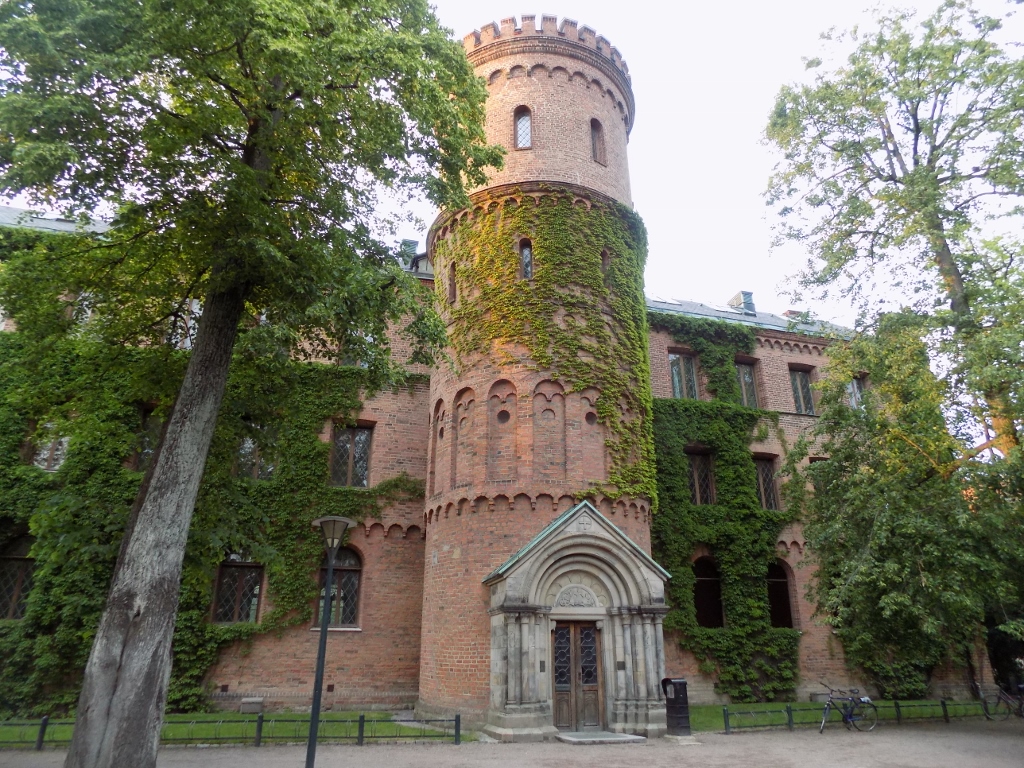 Kungshuset
Kungshuset
The building was constructed in the second half of the 16th century and it was first intended to serve as the residence of the Bishop of Lund, but already one century later it was handed over to the University, after which it was used as a library for a while and later as the Department of Philosophy.
In its direct vicinity there is the main building of Lund University built in the second half of the 19th century. At the dusk on this day, everything was quiet and I just made a circle around the fountain after which I headed for the Cathedral.
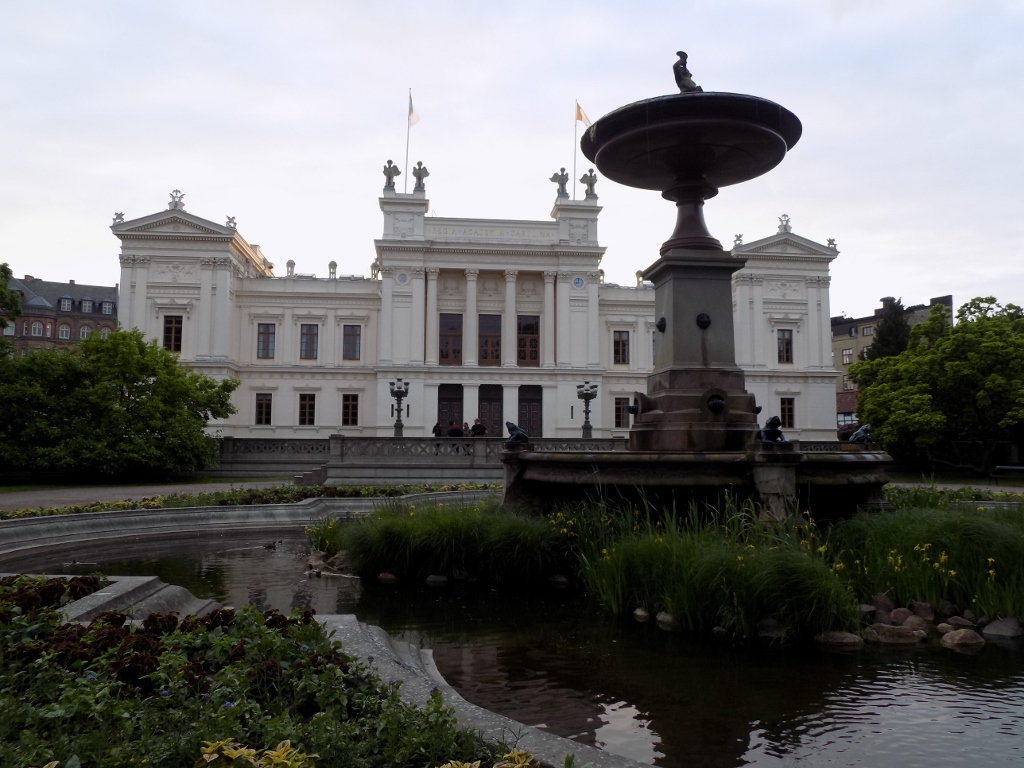 Main building of Lund University
Main building of Lund University
The cathedral is visually separated from the university part of the centre of the town by a nice park, but since it was already quite late, it was closed, so I left the visit for the final day of my trip.
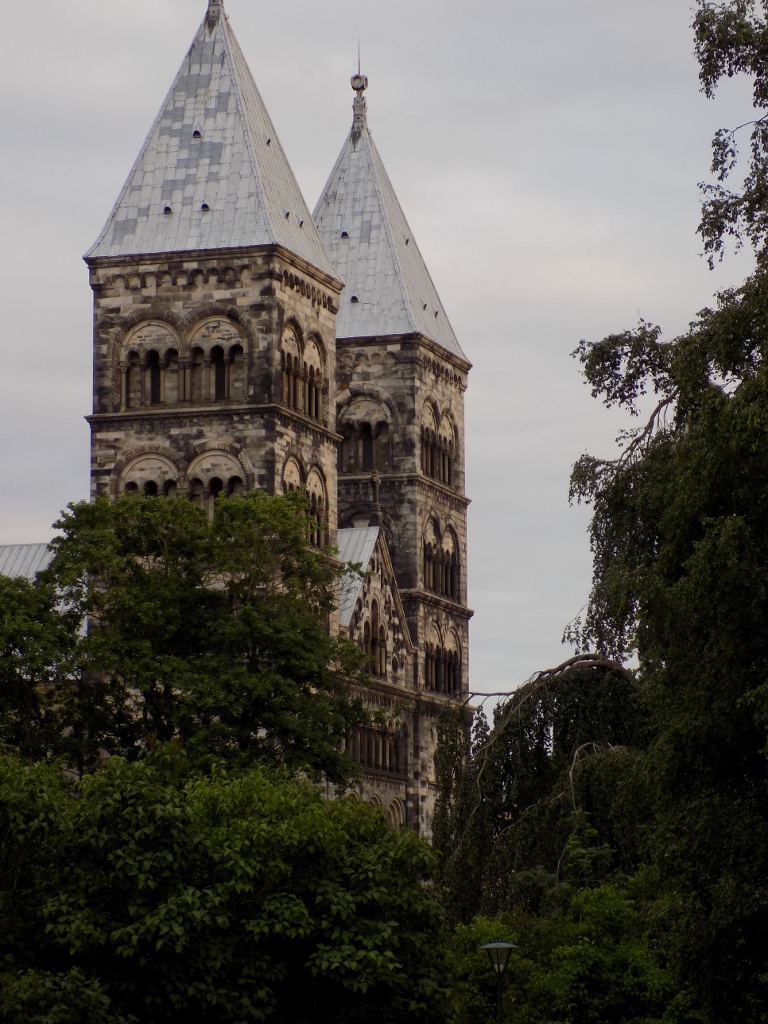 Lund Cathedral
Lund Cathedral
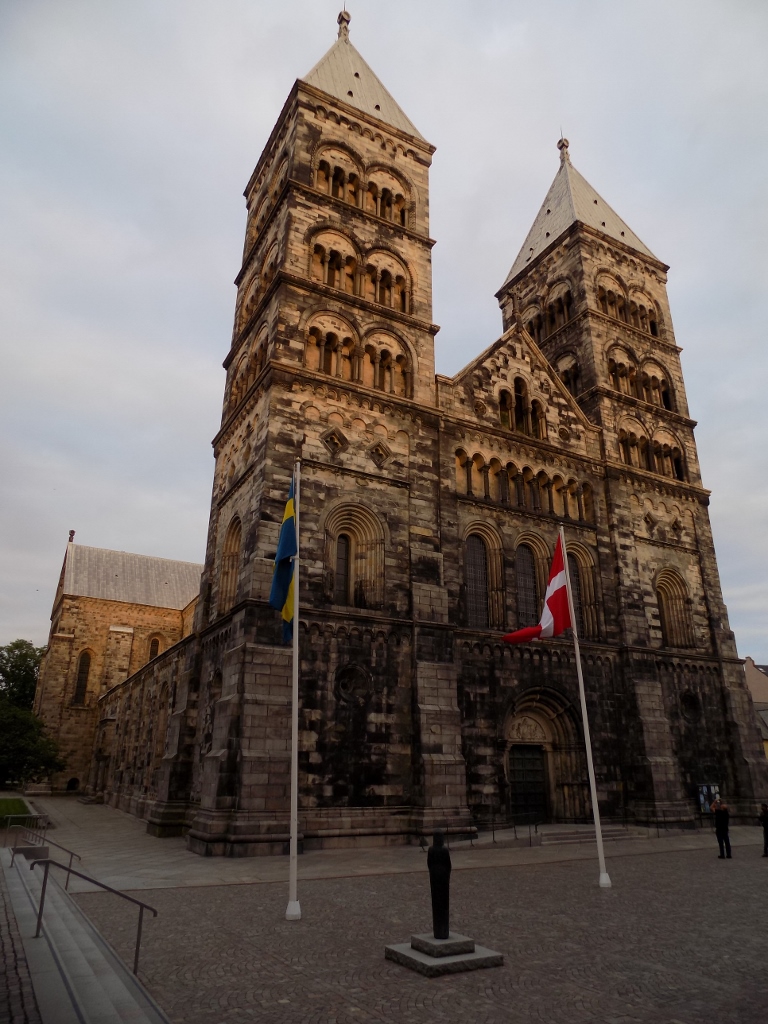 Lund Cathedral
Lund Cathedral
Since it was that late, nothing was actually open and I just leisurely strolled around the downtown area where there are different interesting houses, but I must admit that I did not care to know for each one what it really was and when it was built.
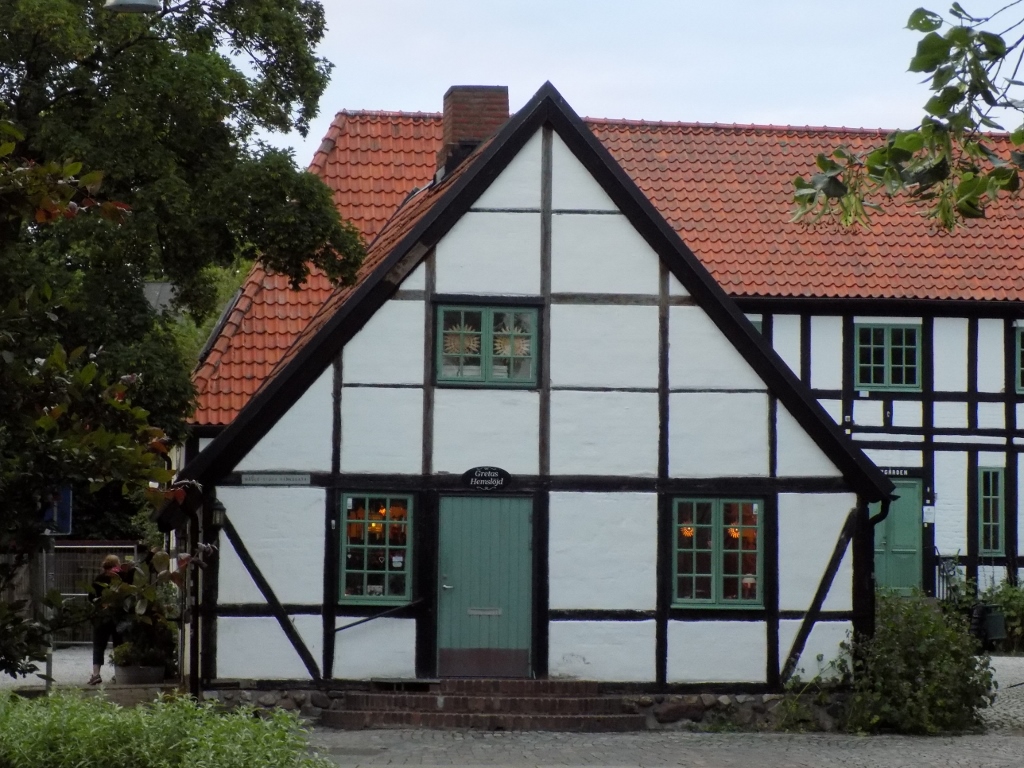 One of the houses in the centre of Lund
One of the houses in the centre of Lund
The following day was completely sunny and that certainly felt good, in addition to which it suited me perfectly since my plans involved visits to several places, so it was better to do it all in dry weather. At the same time, the temperature was also pleasant, although there was a quite strong wind from time to time which created the feeling of freshness.
While I was travelling by train towards my first destination of the day, I greatly enjoyed the picturesque landscapes of south Sweden or, to be more precise, of the province of Scania.
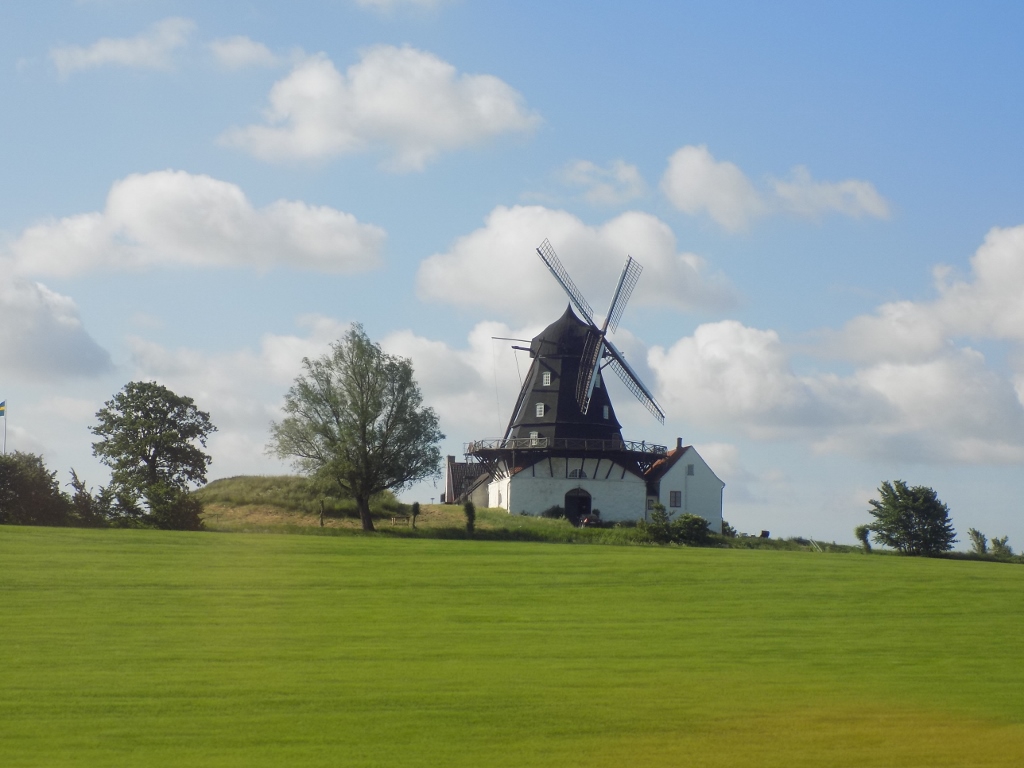 A detail from the province of Scania
A detail from the province of Scania
The first place I visited on this day was Simrishamn, a small town on the east coast of Scania.
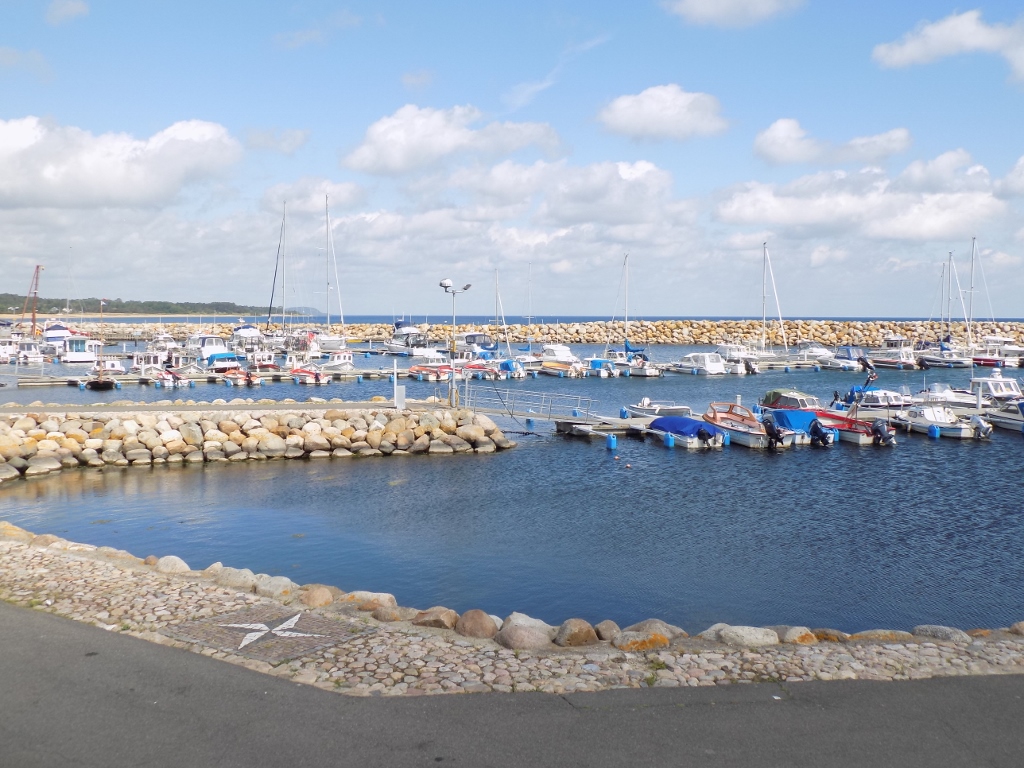 Marina in the town of Simrishamn
Marina in the town of Simrishamn
Although this is quite a small place, on account of historical reasons and importance, Simrishamn is still called a city. The place was mentioned for the first time back in 1161 and although it used to belong to Denmark, since 1658 it was durably transferred into the possession of Sweden. Historically, it is best known as one of the centres for the fishing of herrings.
Near the railway station I saw a visitors’ information centre. However, when I got to it, it was closed. I thought that this must be because it was Sunday, but then I realised it was summer, the weather was beautiful, the noon was already close and after all it was a Sunday indeed, a free day for most Swedes, so I wondered when and for whom this tourist office worked. Still, there were public maps in several places within the small city and I had excellent instructions for moving around, so I don’t think I missed out on the most important things Simrishamn has to offer.
On the other hand, I did stay here only for about an hour, including also a very quick coffee break, since the place does not have to offer too much, apart from its great charm. This was precisely why I opted to come here in the first place, since Simrishamn is considered one of the most picturesque little towns in Sweden.
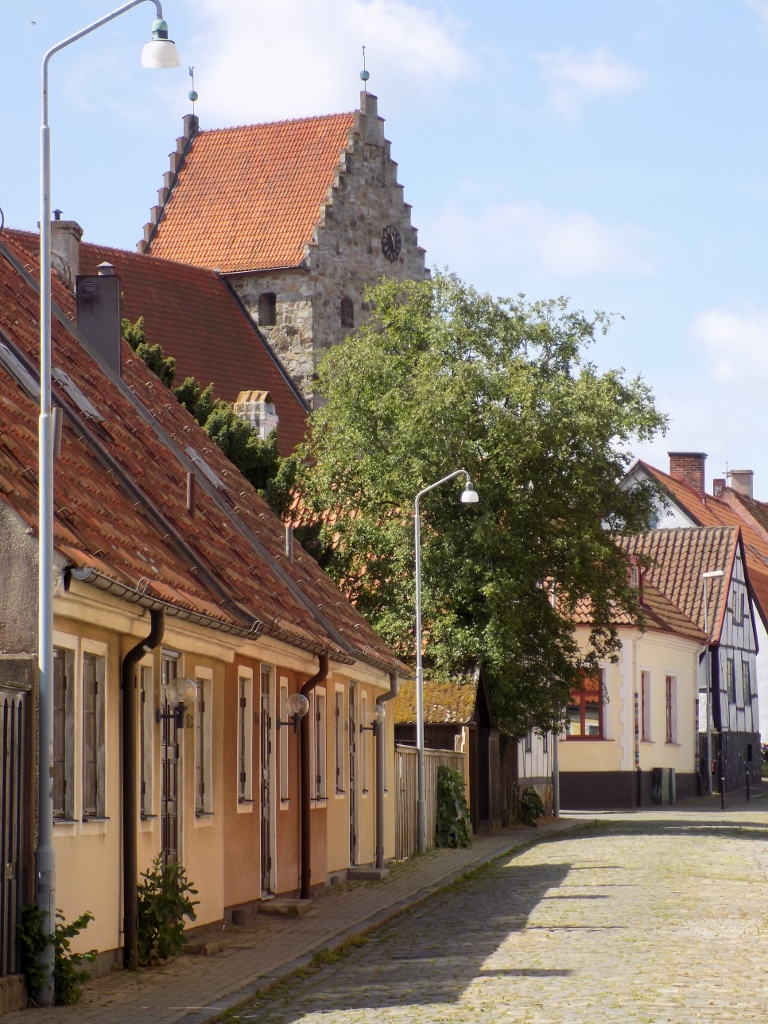 A detail from Simrishamn, including the tower of the Church of St Nicholas (Sankt Nicolai kyrka)
A detail from Simrishamn, including the tower of the Church of St Nicholas (Sankt Nicolai kyrka)
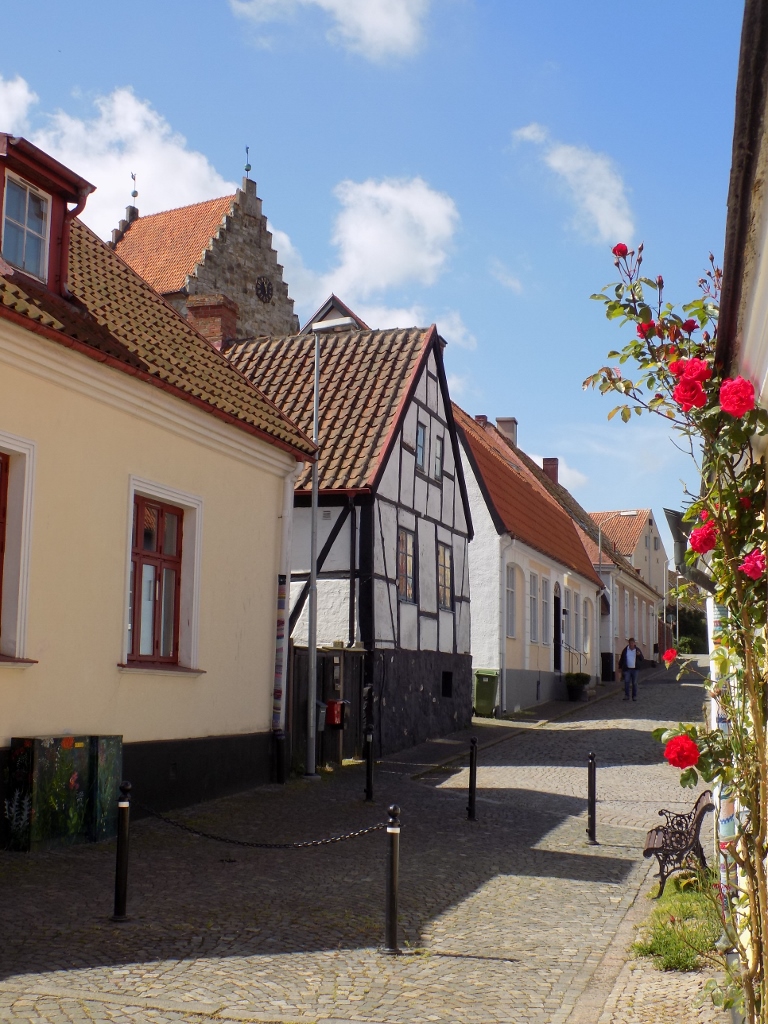 A detail from Simrishamn
A detail from Simrishamn
Its centre is full of cobbled streets lined up with picture-perfect little houses. But, as if this were not enough for the residents, some of them just feel the need to keep decorating anything they can lay their hands on.
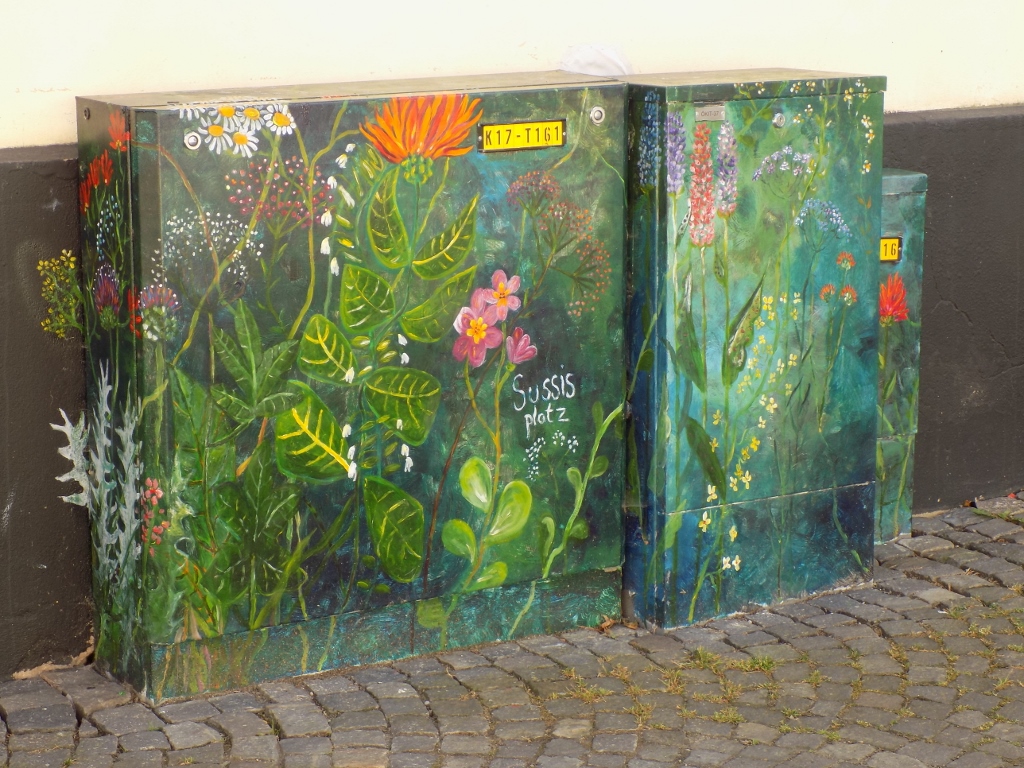 A detail from Simrishamn: utility lockers painted with great level of details
A detail from Simrishamn: utility lockers painted with great level of details
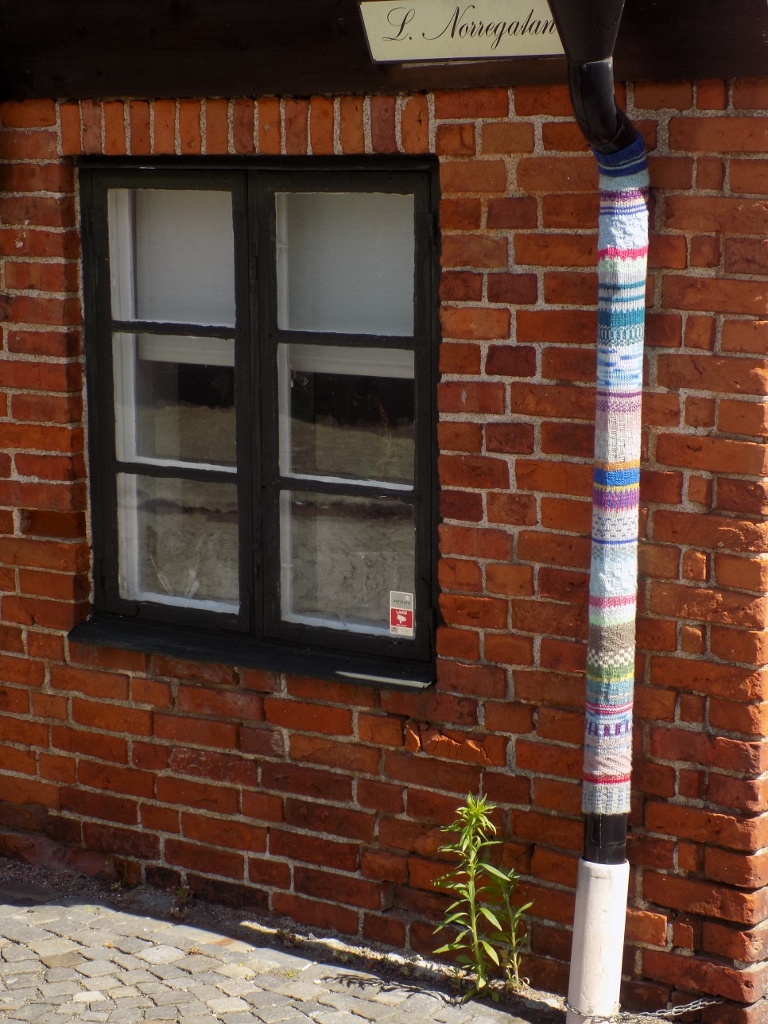 A detail from Simrishamn: a downpipe “dressed” in a knitted tube
A detail from Simrishamn: a downpipe “dressed” in a knitted tube
Of course, I also walked to the local church and I was particularly content that I reached the church following a narrow path between the houses and not the official access road. Such experiences always create impression in me as if I knew very well the place I’m visiting.
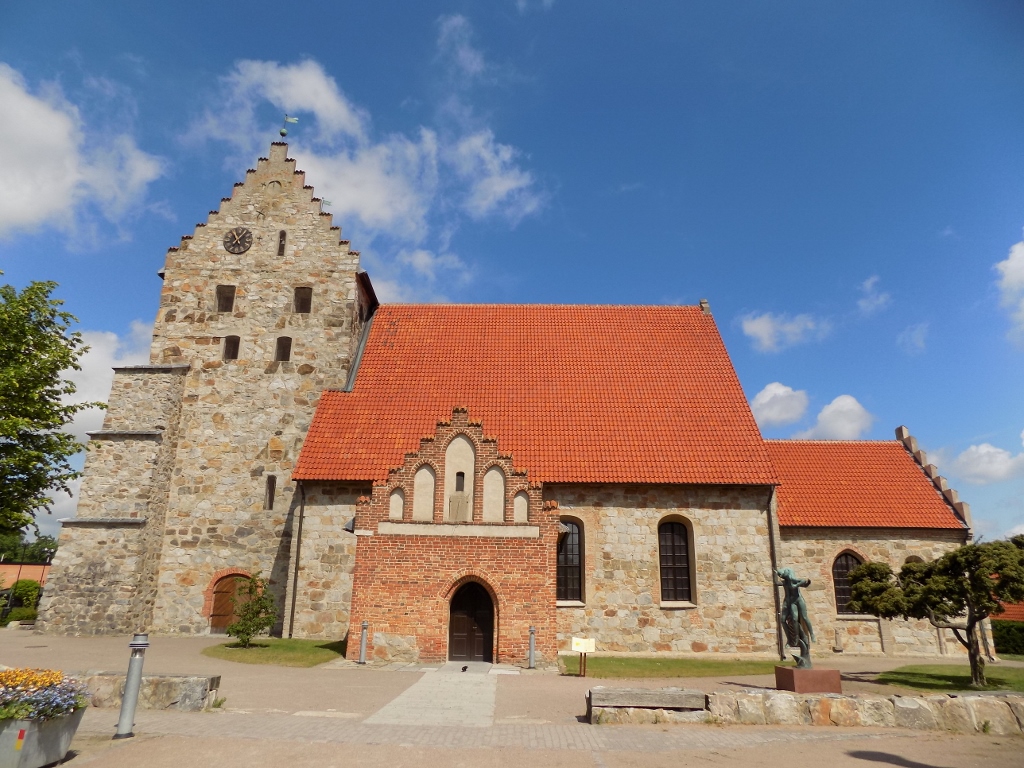 Church of St Nicholas (Sankt Nicolai kyrka)
Church of St Nicholas (Sankt Nicolai kyrka)
The church was, unfortunately, closed, so I only continued with my stroll.
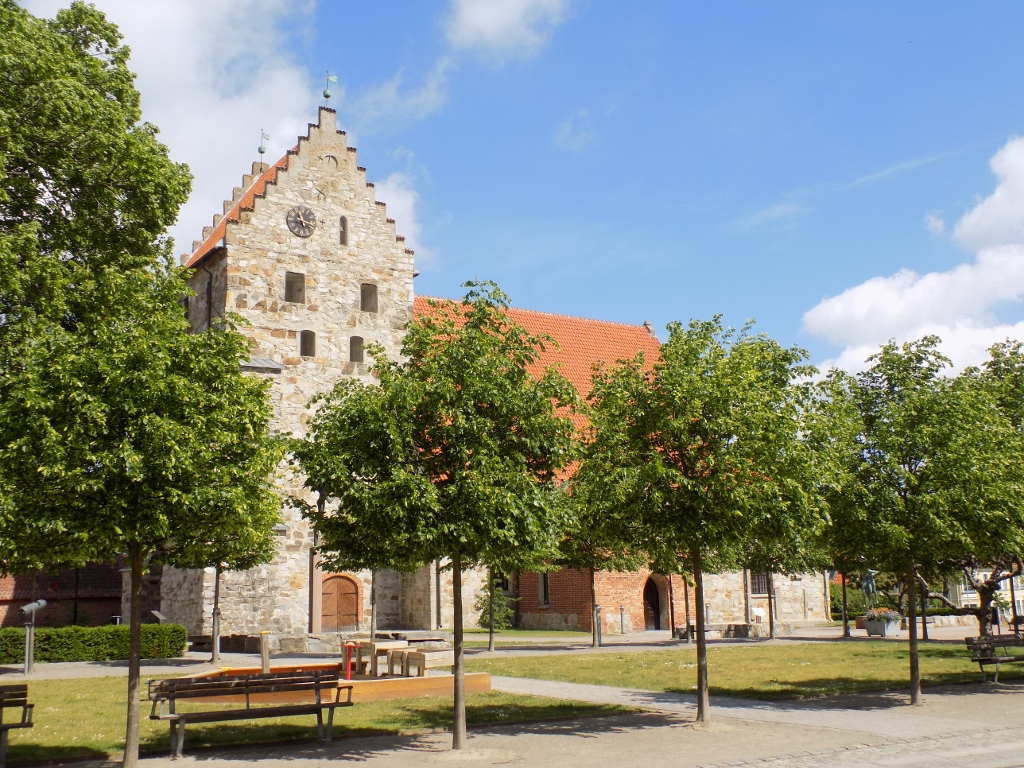 Church of St Nicholas
Church of St Nicholas
After the coffee break, I found yet another alley and went there in order to reach the railway station, since my visit was effectively over.
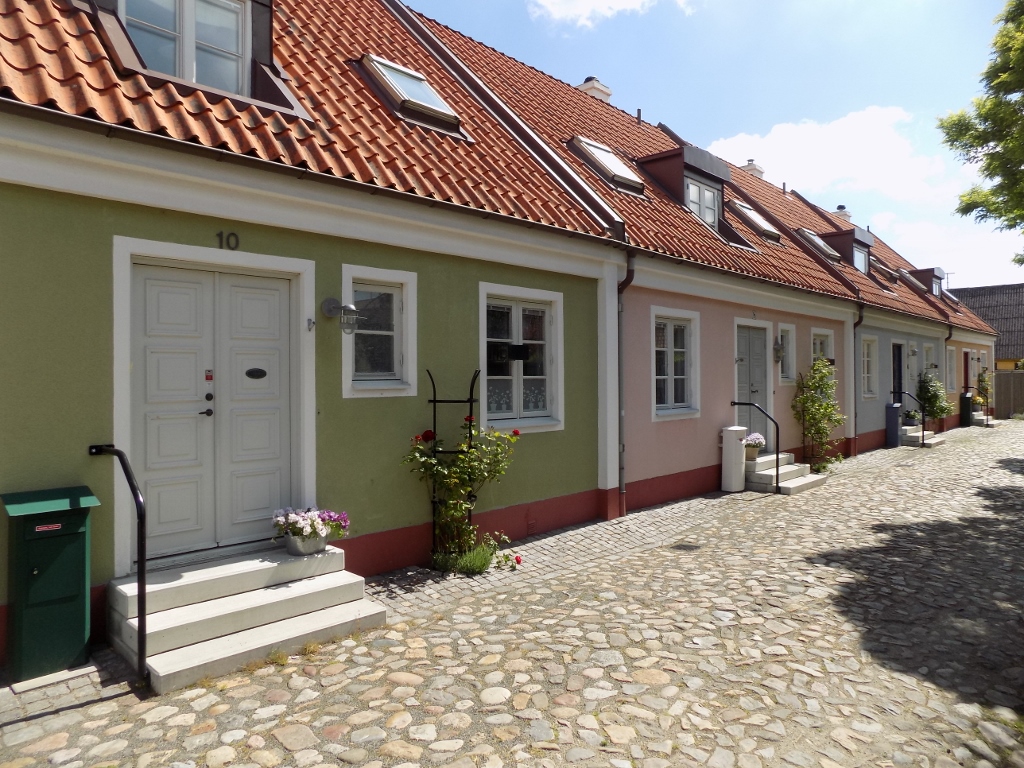 A detail from Simrishamn
A detail from Simrishamn
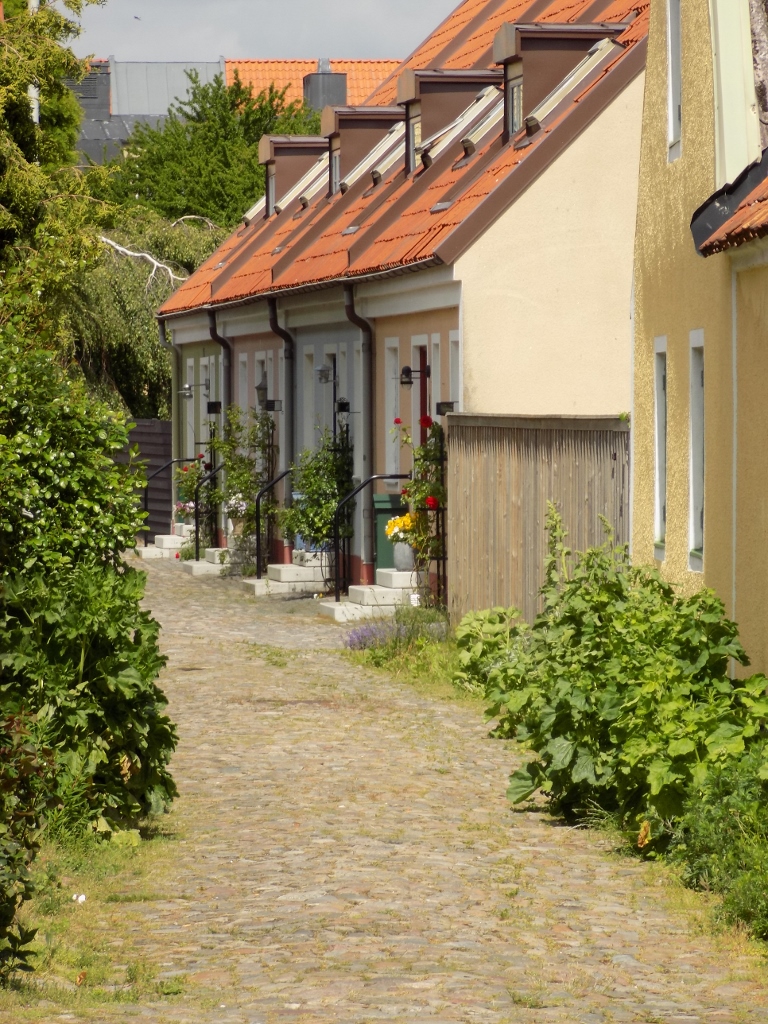 A detail from Simrishamn
A detail from Simrishamn
Simrishamn is certainly a very cute place, but it is questionable how many people are really interested in coming all the way here in order to see several pretty houses. And yet, I absolutely did not regret my coming here. While I was walking around the place, I had a smile on my face that was coming from within and with a very distinct feeling of peaceful contentment it was clear to me that I was doing something that was quite right for me.